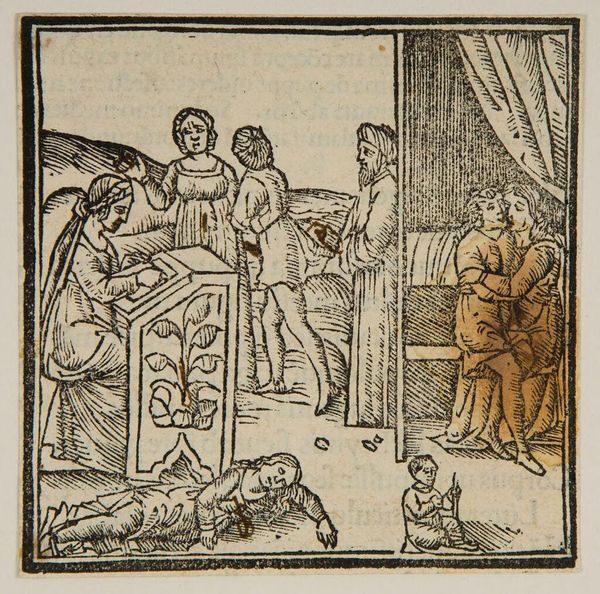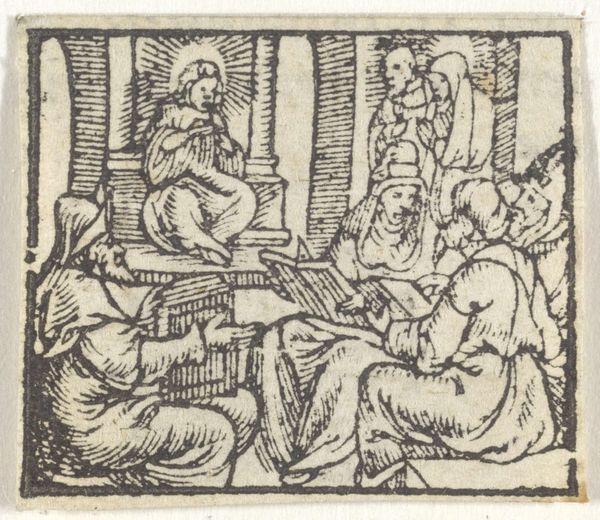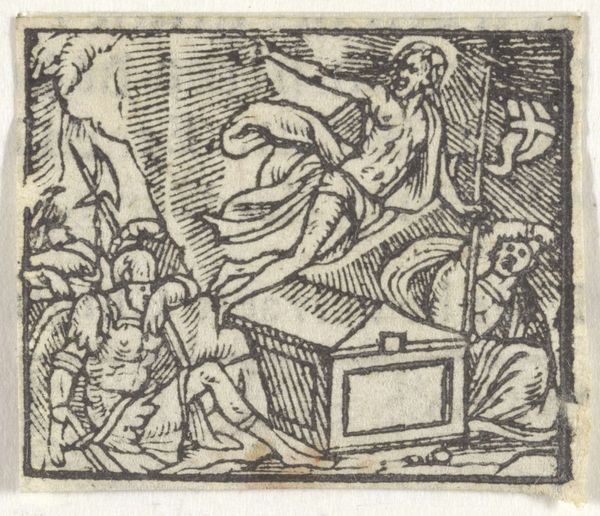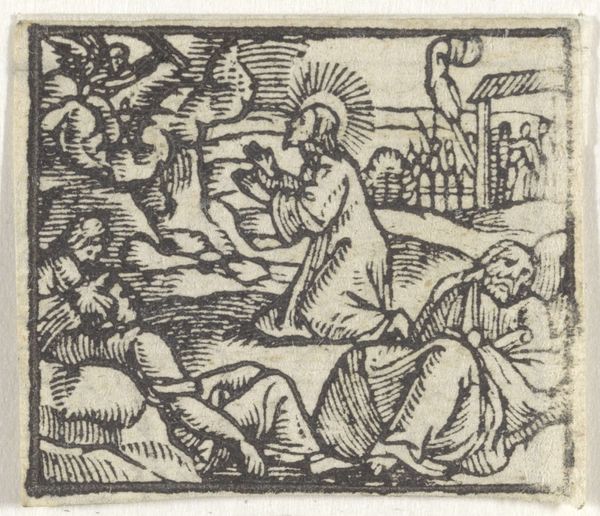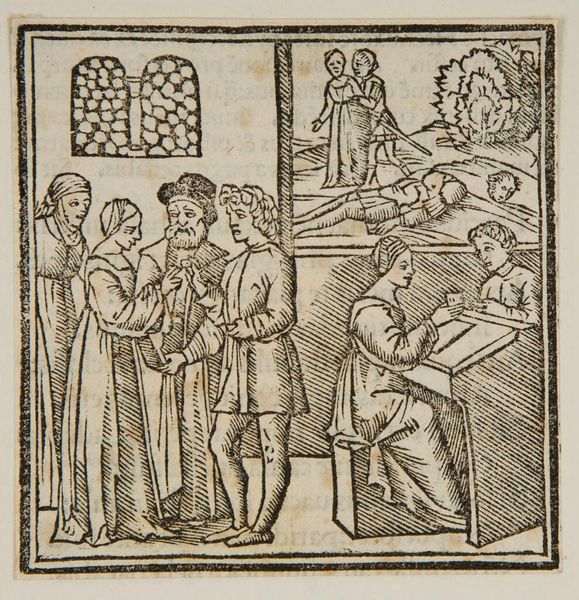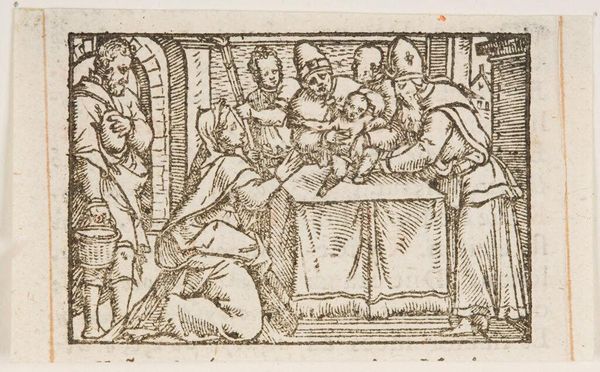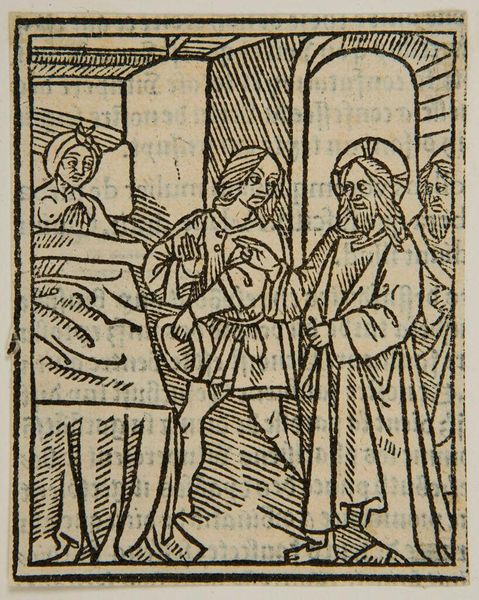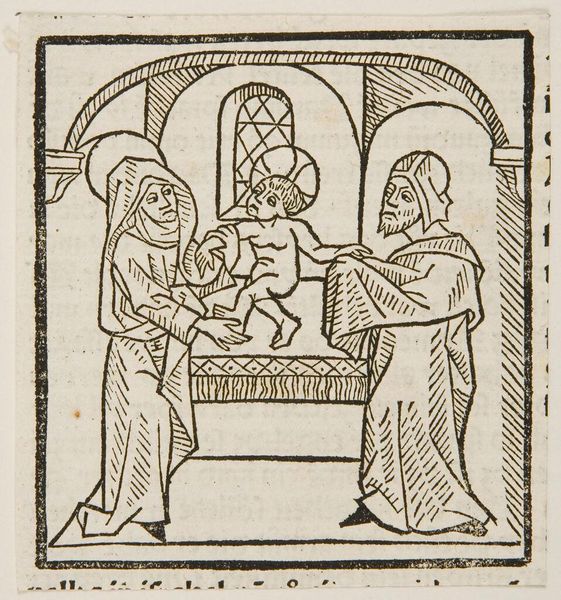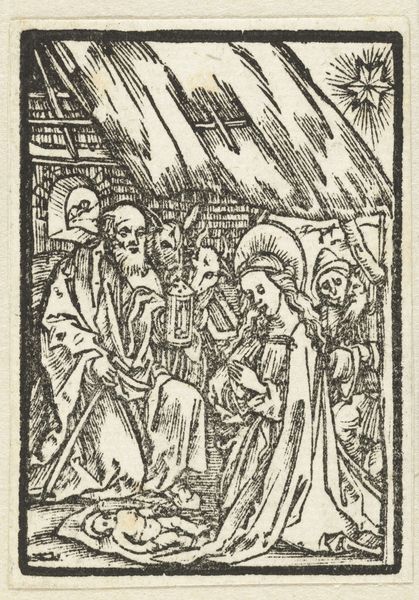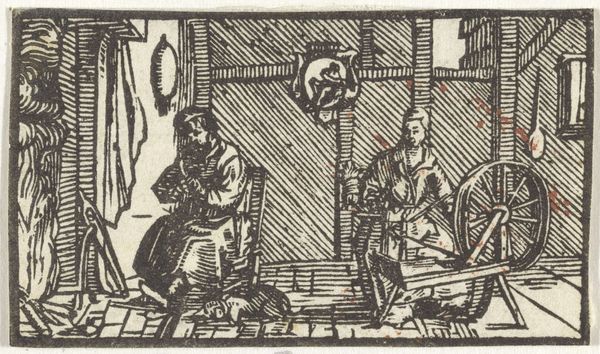
Angels Served at a Table, illustration from Speculum Passionis, 1507 1507
0:00
0:00
drawing, print, woodcut
#
drawing
#
narrative-art
# print
#
figuration
#
woodcut
#
northern-renaissance
#
angel
Copyright: Public Domain
Curator: I'm immediately struck by the stark, almost austere quality of this image, given its subject. It has a rather melancholy tone for what’s supposed to be a divine intervention. Editor: I agree; let's explore that dissonance. We're looking at "Angels Served at a Table," a woodcut illustration created in 1507 by Hans Baldung, now housed at the Metropolitan Museum of Art. It comes from a series called Speculum Passionis, which roughly translates to 'Mirror of the Passion.’ Curator: Mirrors often hold up truths. The piece shows angels serving a meal, presumably to Christ during his Passion. Woodcut is the perfect medium—it strips the scene bare, emphasizing line and form over colour and ornate detail. I find that rawness fitting. The limited palette is also deeply impactful, channeling somber emotion. Editor: The austerity definitely resonates with the themes of sacrifice and suffering prevalent during that time. Notice, though, how the bordering design contrasts with the interior scene. This tension underscores the sacred framed against earthly expectations, which could comment on the socio-political landscape of 16th-century Europe. Curator: Absolutely. These ornamental borders have an echo, framing it. They reflect cultural memory of earlier imagery, contrasting with the stark table. To me, the table functions as an altar, connecting the visual language of ritual to domestic intimacy. Is it commentary, a gentle observation, or even an intervention from higher places to give comfort and respite to someone downtrodden, weary, or in distress? Editor: A potent blend of the sacred and the domestic, indeed. Baldung sets the stage to explore divine solace in an accessible form. Seeing the scene as both intimate and accessible highlights how the common folk, who were dealing with suffering daily, would engage with Christ’s story. It reframes traditional perspectives on power and divinity, which are fascinating, given his context and the emerging tensions of the reformation. Curator: Well said. By blending immediate visual culture with theological underpinnings, the image continues to echo with profound emotional power. Editor: Yes, it brings us closer to the social realities of that time through art, highlighting how Baldung engaged his contemporaries in both hope and distress.
Comments
No comments
Be the first to comment and join the conversation on the ultimate creative platform.

